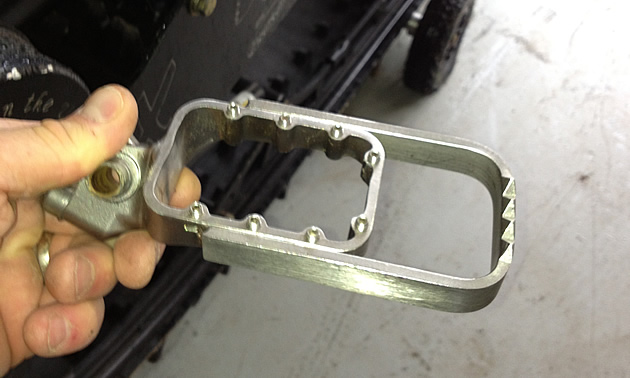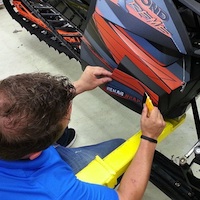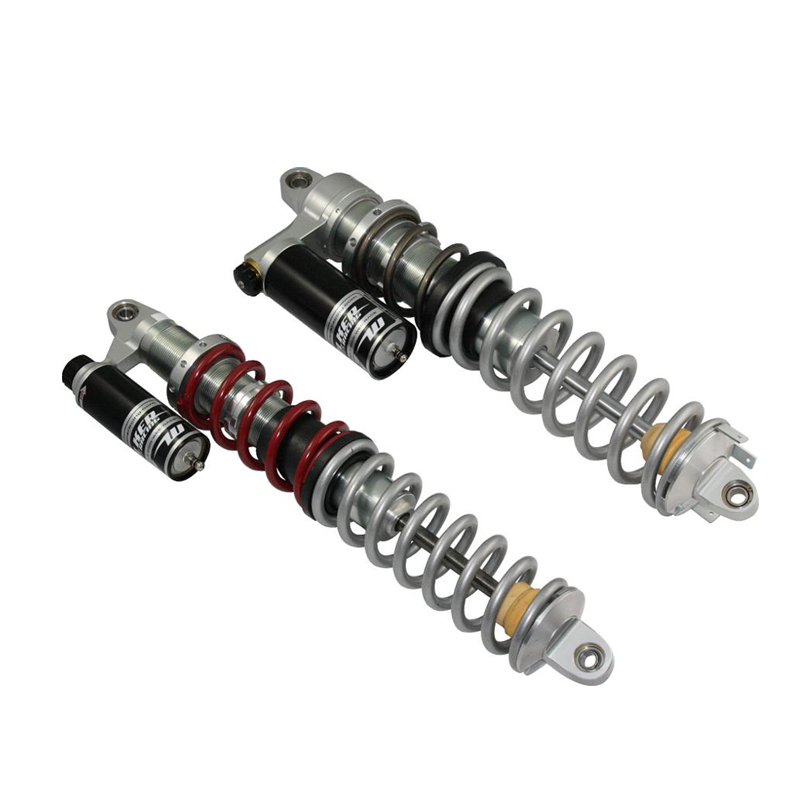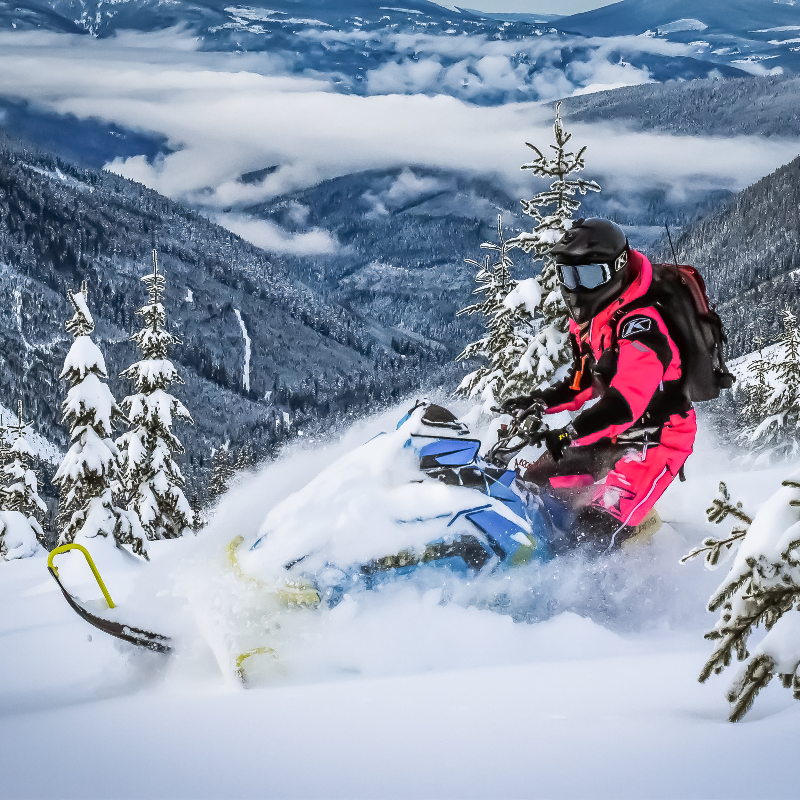Suspension
It is important to understand that a snow bike feels much different than a snowmobile. Snow acts like a cushion as it is, so a soft suspension doesn’t necessarily work to your advantage. Too soft can result in a lack of control and enjoyable handling. You do not want your snow bike to bottom out. A stiffer suspension—sometimes including spring upgrades for the heavier rider—will provide a much better ride with more predictable feedback, which is awesome for the heavier or more aggressive rider.
The EXC models generally come with a more luxurious suspension package from the factory, so take this into account when customizing your suspension for your needs.
This year’s snow bike kits from Timbersled promise better handling on the trail, as that can be the most difficult and challenging terrain to experience on a bike. The deep snow off-trail is simple compared to the hard pack, which can wreak havoc with rider control.
If you are experiencing a snow bike for the first time, perhaps venture forth off-trail to gain a feel for what the bike can do before tackling the hard-packed and sometimes icy trail.
Foot pegs
A snow bike kit is wider in the back than a dirt bike, so the stock foot pegs on your bike may not suit your needs. A wider peg makes it easier to steer with your feet, as well as providing you with secure footing when wearing winter-type footwear. Wider pegs also helps maintain footing even when ice builds up in and around the pegs.
Fuel controllers and jetting
Two strokes: it is recommended to have some type of a jet kit on your carbureted snow bikes. Elevation and temperature changes can wreak havoc with your performance and reliability. A smart carb can help compensate for elevation changes, keeping your fuelling and performance constant.
Four strokes: on fuel-injected bikes, the use of a fuel controller, such as a Dobek or BoonDocker controller, can maintain the integrity of your fuel system throughout temperature and elevation changes.
Performance enhancement made easy
One of the biggest bangs for your buck to add performance is having your cylinder head flowed. When choosing such a specialized modification, be sure to have a proven professional work on your head. Done properly, this performance modification is great! While you experience an increase in power, it does not compromise the integrity or reliability of your bike. Valley Speed Machine Shop Ltd. in Kamloops, B.C., has had excellent results with their flowed heads in the snow bike application.
Air
While air intake is important for the performance of your bike, snow is bad. If water is sucked in to your motor it will not run properly.
Some seal their air-box in the attempt to avoid snow ingestion and others utilize an external pod type of system. The pod is an air intake with a prefilter so air can pass through, but snow and moisture will not. Another bonus of an external pod is the lack of snow accumulation, which often happens with the traditional air-box. Snow can pack into the air-box resulting in the rider having to access the box, to remove the accumulation. With a pod, you can often simply knock the snow off and then keep on riding. There is less rider tinkering and frustration on the hill.
Headlights
Headlights are an excellent addition for your snow bike. Night falls sooner in the winter months than in the spring and summer so take this into consideration when customizing your bike. In the event you were out past dark, a light makes all the difference in the world for safety and peace of mind.
Lights also add a whole new element to the enjoyment of winter nights. Sieg and his friends rode by the light of the full moon one evening, weaving in and out of trees and cruising around. You have great visibility with a headlight and your speeds are not as fast as if you were on a snowmobile so the ability to navigate obstacles is greatly improved.
The bike
Sieg said when choosing your bike, ask yourself the following: “Do I want electric start?” This will narrow down your bike choice to a few brands and models. KTM seems to be manufacturing the majority of their lineup with electric start, so many snow bike conversion kits are finding their way onto these bikes.
It’s not recommended that you go under 300-cc as you want to make sure you have sufficient power for the track kit. Heavier individuals may want a higher-cc bike. The power response of these bikes on the snow is much different than if they were in the dirt. The snow seems to tame them somewhat, so don’t be afraid of a higher horsepower bike.
The race-style bikes or your “R” type models are fun and peppy, where your wider-geared bikes create a strong bike to tractor through the trees, allowing you to take in all that is around you.
“Creeping through the big cedar forests is something that I hope many can experience,” said Sieg. “It is awesome!”
To catch the the Timbersled Mountain Horse in action, pick up your copy of Braaap 13 Buried in stores now or visit the Timbersled website for more information.
Ride hard and ride safe!
Also read Snow Bikers, Stay Safe This Season.







